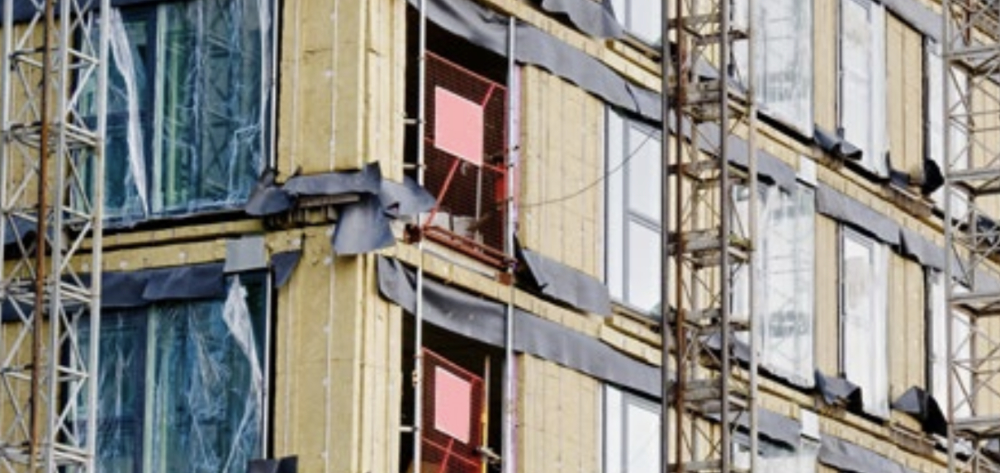A contractor discusses the Building Safety Act
The Building Safety Act, which became law in April 2022, is the foundation of a new building safety regime for the construction sector. A significant amount of secondary legislation has since been introduced, together with supporting industry guidance.
Following the tragic Grenfell Tower fire in June 2017, Dame Judith Hackitt was appointed by the UK Government to undertake an independent review of the Building Regulations and fire safety. It focused on the regulations’ application to high-rise residential buildings. Published in 2018, Dame Judith’s final report: Building a Safer Future: Independent Review of Building Regulations and Fire Safety, set out the need for the industry to undergo a cultural shift to embed “systemic change” in support of the delivery of safer buildings.
We need to adopt a very different approach to the regulatory framework covering the design,construction and maintenance of high-rise residential buildings. It needs to recognise the complexity of high-rise buildings, as well as acknowledge that their integrity can be compromised due to the involvement of many different agencies.
- Building Safety Regulator, to oversee the safety and standards of all buildings.
- National Regulator, for Construction Projects to oversee and enforce a more effective regulatory regime for construction products.
- New Homes Ombudsman,to enable owners of new-build homes to raise complaints.
The Act defines new responsibilities:
Accountable persons have a range of duties in relation to relevant occupied higher-risk buildings to ensure safety risks are managed and residents’ concerns are addressed. Building owners, landlords and developers are required to pay for the remediation of historic safety defects and may need to pay the Building Safety Levy on new residential projects.
And duty-holders are required to manage building safety risks during the design and construction of all buildings. The Act introduces new systems as well:
- Building Control will become a new regulated profession. • Competence is required of all individuals appointed to work on projects, and organisations must demonstrate they have the right organisational capability.
- Gateways are “decision” points at three key stages of a higher-riskbuilding:beforeplanningpermissionisgranted, before building work can begin, and before a building can be occupied.
- A Golden Thread of Information must be created, stored digitally, and updated throughout the lifecycle of a higher-risk building.
- Mandatory and Voluntary Occurrence Reporting to the Building Safety Regulator of fire and structural safety occurrences in buildings that could cause a significant risk to life safety.
The Building Safety Act will establish a stronger regulatory framework for construction products through secondary legislation. The Office for Product Safety and Standards (OPSS), which regulates a wide range of products, has extended its remit to take on responsibility as the National Regulator for Construction Products.
The OPSS, together with local Trading Standards, has powers to enter business premises, inspect and test goods and equipment, and examine documents. As a regulator for construction products, the OPSS aims to deliver safer construction products, better buildings, and improved protection for people and communities,as well as confidence and growth in the construction products market through effective regulation and enforcement.
The Building Safety Act was a long time in the making, involving months and years of consultation between construction and government stakeholders. But regulating for safer buildings is one thing, ensuring compliance is quite another. It is the duty of construction industry stakeholders to show vigilance in adhering to the legislation – a crucial step in the direction of safer, higher quality new buildings.
This article appears in the AT Journal issue 152 Winter 2025 as 'A Contractor’s Guide to the Building Safety Act' and was written by Tony Lawther, Managing Director, BriggsAmasco (pictured above).
--CIAT
[edit] Related articles on Designing Buildings
- Approved Document B.
- Approved Document B: Fire Safety. Current and future changes with historical documentation.
- Best practice.
- BSI competence requirements for principal contractors and designers.
- Building Safety Act 2022.
- CDM 2015.
- Competence.
- Competence framework.
- Competence framework for project managers in the built environment launched.
- Competence management.
- Construction contractor.
- Construction fire safety responsibility and competence matrix.
- Construction phase plan.
- CDM 2015 client duties.
- CDM 2015 contractor duties.
- CDM 2015 designer duties.
- Grenfell Tower.
- Hackitt review of the building regulations and fire safety, final report.
- Learning.
- Professional.
- Professional conduct.
- Professional practice.
- Recruiting and retaining talent in the construction industry.
- Skills gap.
- Principal Contractor.
Quick links
[edit] Legislation and standards
Fire Safety (England) Regulations 2022
Regulatory Reform (Fire Safety) Order 2005
Secondary legislation linked to the Building Safety Act
Building safety in Northern Ireland
[edit] Dutyholders and competencies
BSI Built Environment Competence Standards
Competence standards (PAS 8671, 8672, 8673)
Industry Competence Steering Group
[edit] Regulators
National Regulator of Construction Products
[edit] Fire safety
Independent Grenfell Tower Inquiry
[edit] Other pages
Building Safety Wiki is brought to you courtesy of:








